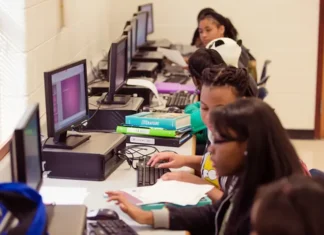
This post was originally published on Afro
By Charlene Crowell
Each year approximately 7 million college students benefit from Pell Grants, a 50-year-old needs-based program that can be used to cover costs for tuition, fees, living costs and room and board. Additionally, these funds have been available at both four-year and two-year institutions.
For students of color and others who are the first in their family to attend college, Pell Grants have been an important part of financial aid packages for an estimated 80 million low-income families with little or no wealth.
But the federal education budget for FY 2026, recently passed by the U.S. House of Representatives, would cut Pell Grant funding by $9 billion to $22.5 billion, compared to 2024’s $31.5 billion. If approved, this significant cut will mean that next year a vital program will serve fewer students with smaller grants, changed student eligibility, and fewer institutions that would be allowed to administer the program.
Currently, the maximum Pell Grant award for the 2025–26 academic year is $7,395 and can be used by both full and part-time students.
If the Senate agrees to the House-passed budget, a maximum Pell award would drop to $5,710 for the 2026-27 academic year and be limited to only students completing 30 academic credit hours, or 12 to 15 credits per semester. Students completing at least 12 academic hours but fewer than full-time, would receive smaller, pro-rated grants.
Students enrolled in fewer than 12 credit hours would no longer be eligible for Pell Grants. Both community colleges and the adult students they serve would be affected by this specific change. Adult students are often employed and have dependent children with responsibilities that do not allow for heavy class loads. Even so, these students choose to return to academic studies to enhance their skills, credentials and earnings.
At a recent hearing by the Senate’s Health, Education, Labor and Pensions (HELP) Committee, a prominent HBCU president called against enacting these steep cuts.
“Today, PELL Grants provide up to $7,395 annually to more than 7 million low- and moderate- income students,” testified Tuskegee University President Mark A. Brown. “For context, a single parent with two children earning up to $51,818 adjusted gross income (225 percent of the federal poverty guideline) can qualify for the maximum award.
“However, this maximum amount covers only 31 percent of tuition, fees, room and meals at the average public four-year college, compared to 79 percent in 1975,” he continued. “Cuts to the program would put college out of reach for many more low-income students, while increases would represent a true federal investment in education, reduce dependence on loans, and help address workforce skill deficits.”
Nor is Tuskegee alone in attacking proposed cuts. Other education stakeholders have also weighed in.
“To reduce the maximum Pell Grant when we should be doubling it, reduce the number of students eligible for Pell Grants, increase the number of credit hours necessary for Pell without consideration for students who work their way through college, and to impose risk sharing on colleges who cannot force students to make student loan payments in an increasingly uneasy economy just seems as if those who wrote this bill are out of touch with reality,” said Lodriguez V. Murray, the United Negro College Fund’s senior vice president for public policy and government affairs.
For Katherine Meyer, a fellow in the Brown Center on Education Policy at Brookings, the proposed Pell cuts are a part of a broader retreat from a federal role in higher education.
“Between the ongoing budget reconciliation process and President Trump’s FY 2026 budget request, federal financial aid is at risk,” wrote Meyer in a recent post. “Provisions in the reconciliation bill would eliminate Pell grant eligibility for millions of students, and the budget proposes eliminating or dramatically reducing Pell and other federal grant aid. Without robust federal funding for financial aid, states and students will scramble to fill in the gaps, with the end result being fewer opportunities to pursue higher education for the lowest income students.”
On May 21, Education Secretary Linda McMahon testified before the subcommittee of House Appropriations to defend the agency’s FY 2026 budget request.
“President Trump’s vision is to make American education freer, fairer, and more competitive globally by eliminating Federal bureaucracy and empowering states, parents, and educators,” testified McMahon. “Our FY 2026 budget request delivers on this promise by reducing spending for ineffective programs and prioritizing effective ones, while fully enforcing Federal law and giving power back to states, parents, and educators.”
The nation’s broad disagreement on these and other changes to the Education Department were perhaps best summarized in another testimony at the HELP committee hearing. According to Mark Pierce, executive director of the Student Borrower Protection Center:
“Americans deserve more than a higher education system that acts as a finishing school for the children of millionaires and billionaires while systematically denying economic and educational opportunities to the rest of us. Our government should be relentlessly focused on making markers of middle-class American life—including education—cheaper for working families, not more expensive.”
The opinions expressed in this commentary are those of the writer and not necessarily those of the AFRO.
The post Pell Grants at peril: 7 million recipients face $9 billion program cut appeared first on AFRO American Newspapers.



